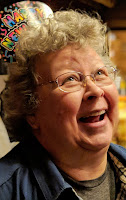Why do I need citations? I don't want to publish (and other excuses)
Citations save you time and money
If quality of research is of no interest, at least taking excellent notes of Who, What, When and Where (or as Tom Jones puts, it, Where In and Where At) about each source will save you endless time and money by preventing multiple identical searches of the same databases, books and repositories. And you will save money when you order the exact record you need, rather then the wrong one, to say nothing of saved travel and time costs!
Bonus: We all get interrupted at times. Having complete and orderly notes will help us get back to work with far less fuss.
Quality
Don't we all want to do the best quality research possible in the time we have to devote to our family history? If so, developing the habit of documenting your research in a timely and orderly way will save time, money and bother, and more important, give you the tools to do good analysis of what you've found. In her classic Evidence Explained: Citing History Sources from Artifacts to Cyberspace (2007), Elizabeth Shown Mills said on the inside cover:
SOURCES provide INFORMATION from which we select EVIDENCE for ANALYSIS.
For instance, if your only source of information about the birth of an ancestor is a birth index, when you take stock of your findings about this person, you can then search for an original record if such a record exists. Or search for more indirect evidence to support what is reported in the index, which will give you more confidence in the date and place than a single index entry.
Citation for Beginners by Shellee Morehead is a wonderful webinar at https://familytreewebinars.com/download.php?webinar_id=763. The first slide says Don't Panic Yet! Citation for Beginners. The talk is well worth watching because you will learn how easy it is to gather the information you will need later. Morehead says that taking timely notes is "investing in your future research." Isn't that a lovely thought?
Take note
In that video, Morehead talks about the five Ws - Who, What, When, Where at, and Where in.
Who: who created the artifact or record? A person, an agency or other group? Who provided the record to you? A repository?
What: Title or description
When: when was the record created and/or compiled? When did you access the database?
Where (at): Where was the record or artifact made, written, filed? Where is it now located or accessed?
Where (in): page, box, folder or URL so the record can be found efficiently.
Use the tools you already know and like
If you use a genealogy database program such as Family Tree Maker, Legacy Family Tree, RootsMagic or Gramps, link each fact to one or more sources in that database and include all five Ws. This will allow you to analyze and evaluate the information found so you can see what gaps still need to be filled. In addition, you can quickly create citations for articles, bibliographies and timelines.
If you are on a website like FamilySearch FamilyTree, use your "reason statements" to evaluate each source as you link it to the person or family. See more about that in this: https://skcgs.blogspot.com/2020/08/from-annoyance-to-love.html
Some folks like the snip tool in Windows or Evernote for online research. It's important to organize files so that you can find these images. These tools can also work for tracking negative results -- places or searches you have made (with the exact search terms used) so that you don't repeat those searches -- or help you find the same site to make a new search.
I use screenshots and text files in the same folder with the same name except for the file type, so they sort together. I've not looked into adding a citation to the metadata of the images but that might be very useful.
Further reading:
I've put on my Christmas list, Tom Jones, Mastering Genealogical Proof. Looking at the reviews on GoodReads, it seems like an excellent study manual. Please mention in the blog comments if you have worked your way through this one.
After all, as Mills reminds us, after analysis, "A sound CONCLUSION may be considered 'PROOF.'"1






I believe the book you want is Mastering The Art of Genealogical Documentation. Mastering Genealogical Proof is all about correlating evidence and writing proof arguments.
ReplyDelete